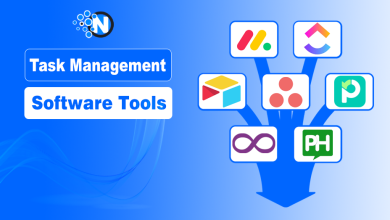The Advantages of Software Localization

In our modern, interconnected realm, software seamlessly intertwines itself into our daily lives. Whether it’s the apps on our smartphones or the interfaces of desktop applications, software’s omnipresence is undeniable.
However, to fully tap into the boundless potential of software on a global scale, it’s imperative to grasp the profound significance of the software localization service. In this blog post, we will discuss the multiple advantages of software localization and how it acts as the bridge connecting your software to a global audience.
The software localization service represents the intricate art of tailoring software to fit a specific locale or market. It goes beyond mere translation, encompassing the meticulous customization of the software to align with the cultural, linguistic, and functional needs of the target audience. To understand the full scope and benefits, delve deeper into the world of software localization.
Let’s embark on an expedition into the pivotal benefits of software localization:
Expanding Into New Markets
Through the prism of software localization, you open the gates to a broader, global audience. Software that speaks the language of its users and harmonizes with their cultural inclinations often leads to increased user adoption and, subsequently, higher revenue.
Elevating User Experience
Software localization elevates the user experience to new heights. Users appreciate a product that mirrors their language, adheres to their date formats, and respects their cultural norms. This, in turn, fosters user satisfaction and loyalty.
Ensuring Compliance And Accessibility
Software localization ensures that your digital creation complies with local regulations and standards. In sectors like healthcare and finance, where strict adherence to specific guidelines is crucial, localization is indispensable.
Gaining a Competitive Edge
Localizing your software gives you a competitive edge in the global marketplace. Users are drawn to products that cater to their linguistic and cultural needs, often bypassing those that do not.
Boosting Conversion Rates
Localized software frequently leads to higher conversion rates. When users can effortlessly navigate your software in their mother tongue, the likelihood of them completing desired actions or transactions significantly increases.
Exploration of the Software Localization Process
The duration of the localization process is contingent upon the complexity of the software and the number of languages involved. On average, it can span from a few weeks to several months, depending on the intricacies of the project.
Scrutinizing Content
The first step involves a thorough analysis of all the content within the software, including user interfaces, menus, error messages, and documentation. It is an intricate examination that dissects every element for optimization.

Translation and Assimilation
Translation serves as the cornerstone in the realm of localization endeavors. It transcends mere word conversion; it is the art of seamlessly integrating content to connect with the intended audience.
Nurturing Cultural Sensitivity
Software localization isn’t solely linguistic; it’s a delicate tapestry of cultural nuances. Colors, symbols, and imagery hold distinct connotations in various cultural contexts. A well-executed localization effort pays homage to these subtleties.
Human translators possess the invaluable ability to infuse cultural and linguistic nuances into the localization process, a dimension that machines cannot replicate.
Strict Functional Testing
It is crucial to subject the product to thorough functional testing before the localization step starts. To ensure flawless performance in the intended location, this thorough analysis is being conducted. Notably, it goes deeper than simple translation, hunting for any language or functional errors and fixing them. The final product will be a software version that perfectly fits into its new linguistic environment.
Read Also: Latest Software Testing Trends: Unlocking Success
Maintaining Constant Updates
The process of localization requires constant effort. Software is a dynamic industry, and evolution is a given. Your software and its localized versions must both go through updates and adjustments. The only way to maintain a smooth user experience is through regular updates. Without them, the complex network of operations and languages could start to fall apart, leaving customers perplexed and unsatisfied.
Transformations on the Global Stage
Expanding your software’s horizons through localization is a strategic move that can lead to unparalleled success. To underscore the significance of software localization further, let’s delve into real-world instances where it has brought about significant transformations:
Cultural Significance
Imagine a video game with characters, dialogue, and settings tailored meticulously to a specific culture. Such games often resonate deeply with players, fostering a dedicated fan base. This level of cultural resonance is achievable only through software localization.
Legal Adherence
In the realm of business and legal software, adherence to local regulations is imperative. Localization guarantees that your software complies with specific legal requirements, mitigating risks and liabilities.
E-learning and Education
E-learning platforms are gaining prominence worldwide. Through the localization of educational software, you facilitate a seamless learning experience for students in their native tongue, enhancing comprehension and engagement.
Global Support
With a localized software version at your disposal, offering customer support in the user’s language becomes significantly more streamlined. This translates into swifter issue resolution and heightened customer satisfaction.
Sustaining Brand Integrity
Maintaining brand consistency is essential for global enterprises. Software localization plays a pivotal role in preserving brand identity by ensuring that messaging and imagery remain aligned with your brand’s essence across all markets.
Navigating Localization Challenges
While the merits of software localization are evident, it’s equally crucial to address the challenges that may arise during the process:
Taming Version Control
Localization extends far beyond the boundaries of language. It encompasses the art of adapting graphics, design elements, and functionality to resonate with the preferences of the target audience. Managing different software versions for diverse markets can become complex. Effective version control systems are essential for steering this intricate ship.
Prolific Quality Assurance
Ensuring the quality and precision of translations and adaptations is an ongoing challenge. Stringent testing and quality assurance protocols act as sentinels guarding the delivery of a polished, localized product.
Content Evolution
With regular software updates, maintaining consistency across multiple localized versions can be challenging. An adept content management system serves as the compass guiding you through this labyrinth.
Resource Allocation
Software localization can be resource-intensive, requiring skilled translators, developers, and project managers. Prudent resource allocation is the foundation of successful localization endeavors.
Market Insight
Understanding the preferences and expectations of your target audience in each locale is essential. Market research guides your efforts to effectively tailor your software to diverse cultures and markets.
Ending Note
In conclusion, software localization is an essential strategic need in the modern global environment rather than a personal endeavor. Its advantages, such as the broadening of market vistas, the improvement of user experiences, and the acquisition of a competitive edge, are necessary for any software developer who hopes to succeed in the international arena.




